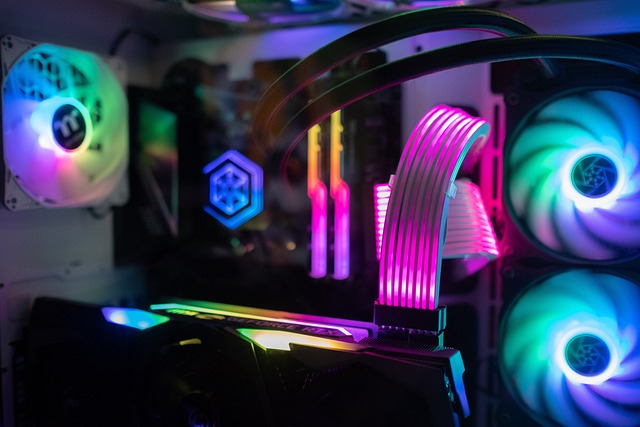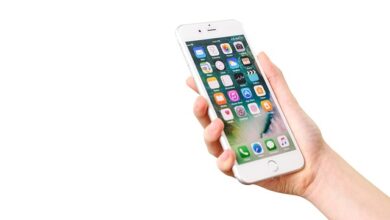
Graphic design plays an essential role in the modern digital world, from creating stunning visuals for social media to designing eye-catching advertisements and professional business materials. To create these visual masterpieces, graphic designers rely heavily on sophisticated software that enables them to bring their visions to life. The software landscape is vast and diverse, each tool tailored to specific needs, budgets, and expertise levels. This article will provide an in-depth overview of the best graphic design software available, detailing their features, strengths, and why they might be the best choice for various users.
1. Adobe Photoshop: The Industry Standard
Overview
Adobe Photoshop is arguably the most famous and widely used graphic design software in the world. Known for its versatility and powerful features, Photoshop is the go-to tool for professional designers, photographers, and artists.
Key Features
- Photo Editing: Photoshop excels in photo manipulation, from basic adjustments to complex composites.
- Layer-Based Editing: This allows for non-destructive editing, meaning you can modify individual parts of a design without affecting the entire image.
- Advanced Tools: Brushes, gradients, color correction, and an extensive library of plugins give designers the flexibility to experiment.
- Integration with Adobe Suite: It seamlessly integrates with other Adobe products like Illustrator, After Effects, and InDesign, making it a robust part of the larger Adobe Creative Cloud ecosystem.
Best For:
Photoshop is best suited for professional designers who require precise control over their projects. It’s excellent for photo editing, digital painting, and creating pixel-based images. The learning curve can be steep for beginners, but once mastered, it’s a powerful tool.
2. Adobe Illustrator: Vector Perfection
Overview
Adobe Illustrator is another top choice in the Adobe family, focusing specifically on vector graphics. Unlike pixel-based images, vector graphics are scalable to any size without losing quality, making Illustrator a great choice for logos, icons, and print design.
Key Features
- Vector Graphics: Design crisp and scalable graphics that can be resized infinitely without pixelation.
- Typography Tools: Illustrator offers excellent tools for working with type, making it ideal for creating logos and brand identities.
- Pen Tool: The pen tool is a standout feature, allowing designers to create smooth, clean curves and intricate designs.
- Live Trace: Convert raster images into vector graphics easily, a feature loved by designers working with scans or sketches.
Best For:
Illustrator is perfect for graphic designers who work with logos, illustrations, and any design that requires clean, scalable graphics. If your projects require precision and clarity at any size, Illustrator is the ideal tool.
3. CorelDRAW: A Versatile Alternative
Overview
CorelDRAW is another powerhouse in the graphic design industry. While it’s less popular than Adobe’s offerings, it has a loyal user base, especially among designers who prefer a more intuitive and user-friendly interface.
Key Features
- Vector Illustration: Like Illustrator, CorelDRAW is built for vector graphics, making it perfect for logos and large-format designs.
- Page Layout: CorelDRAW excels in both illustration and layout design, providing a comprehensive tool for everything from brochures to websites.
- Advanced Color Management: CorelDRAW offers precise control over colors, making it ideal for print design where color accuracy is paramount.
- AI-Powered Tools: The latest versions of CorelDRAW incorporate AI tools that help automate tasks, such as vectorizing bitmaps or suggesting design improvements.
Best For:
CorelDRAW is often preferred by graphic designers who work extensively in print. It’s also a fantastic alternative for those looking for a one-time purchase instead of a subscription model like Adobe Creative Cloud.
4. Sketch: The UI/UX Designer’s Dream
Overview
Sketch has carved out a significant niche for itself in the world of UI (User Interface) and UX (User Experience) design. While it’s more specialized than Photoshop or Illustrator, Sketch’s simplicity and focus on web and mobile design make it a standout.
Key Features
- Vector-Based: Like Illustrator, Sketch is vector-based, but it’s optimized for designing user interfaces and digital experiences.
- Symbols and Styles: Designers can create reusable components and styles, speeding up the design process and ensuring consistency across projects.
- Prototyping: Sketch offers simple prototyping tools, allowing designers to create clickable wireframes and user flows for websites and apps.
- Third-Party Plugins: A rich ecosystem of plugins extends Sketch’s functionality, allowing for features like animations, version control, and real-time collaboration.
Best For:
Sketch is ideal for UI/UX designers focused on creating websites, mobile apps, and digital experiences. It’s best suited for designers who want a lightweight, specialized tool rather than an all-in-one design suite.
5. Affinity Designer: The Budget-Friendly Competitor
Overview
Affinity Designer has gained a lot of attention in recent years as a budget-friendly alternative to Adobe Illustrator. Developed by Serif, Affinity Designer offers professional-level vector and raster graphic design capabilities at a fraction of the cost.
Key Features
- Vector and Raster Support: Affinity Designer allows for both vector and raster design in one program, offering flexibility that Adobe separates across Photoshop and Illustrator.
- Precision Tools: Affinity Designer has all the pen, brush, and shape tools that designers expect in high-end software.
- Non-Destructive Effects and Adjustments: Similar to Photoshop, Affinity Designer offers non-destructive editing capabilities, allowing you to experiment without ruining your original design.
- One-Time Payment: Unlike Adobe’s subscription model, Affinity Designer requires a one-time purchase, making it a more affordable option for many.
Best For:
Affinity Designer is great for freelancers, hobbyists, and professionals who want a powerful design tool without the recurring cost of a subscription. It’s especially useful for those who need both vector and raster graphics in a single program.
6. Canva: The User-Friendly Web Tool
Overview
Canva has revolutionized design for beginners and non-designers. It’s a web-based graphic design platform that offers an easy-to-use interface and thousands of templates for everything from social media posts to business presentations.
Key Features
- Templates and Themes: Canva offers a vast library of pre-made templates, allowing users to quickly create professional-looking designs with minimal effort.
- Drag-and-Drop Interface: The drag-and-drop functionality makes Canva accessible even to those with no prior design experience.
- Free and Paid Versions: Canva offers both free and premium versions, with the premium version unlocking more advanced features, assets, and templates.
- Collaboration Tools: Canva allows teams to collaborate on designs in real-time, making it an excellent choice for marketing teams and businesses.
Best For:
Canva is perfect for beginners or those who need to create simple designs quickly. It’s especially popular for social media graphics, presentations, and small business marketing materials. However, its simplicity can be limiting for more advanced design tasks.
7. Procreate: The Digital Artist’s Best Friend
Overview
Procreate has become the go-to software for digital artists, especially those using iPads with an Apple Pencil. While it’s not a full-fledged graphic design software in the traditional sense, its powerful drawing and painting tools make it a must-have for illustrators and artists.
Key Features
- Intuitive Drawing Tools: Procreate offers a vast selection of brushes, textures, and tools that mimic traditional drawing techniques like pencil, ink, and watercolor.
- Pressure Sensitivity: When used with an Apple Pencil, Procreate offers pressure sensitivity, allowing artists to create highly nuanced drawings.
- Time-Lapse Recording: Procreate automatically records your entire process, letting you create time-lapse videos of your artwork from start to finish.
- Custom Brushes: Artists can create their own brushes, allowing for unlimited creativity in style and technique.
Best For:
Procreate is ideal for digital artists, illustrators, and anyone who enjoys drawing or painting. While it’s not built for traditional graphic design tasks like layout or typography, it’s unmatched for creating custom artwork and illustrations.



